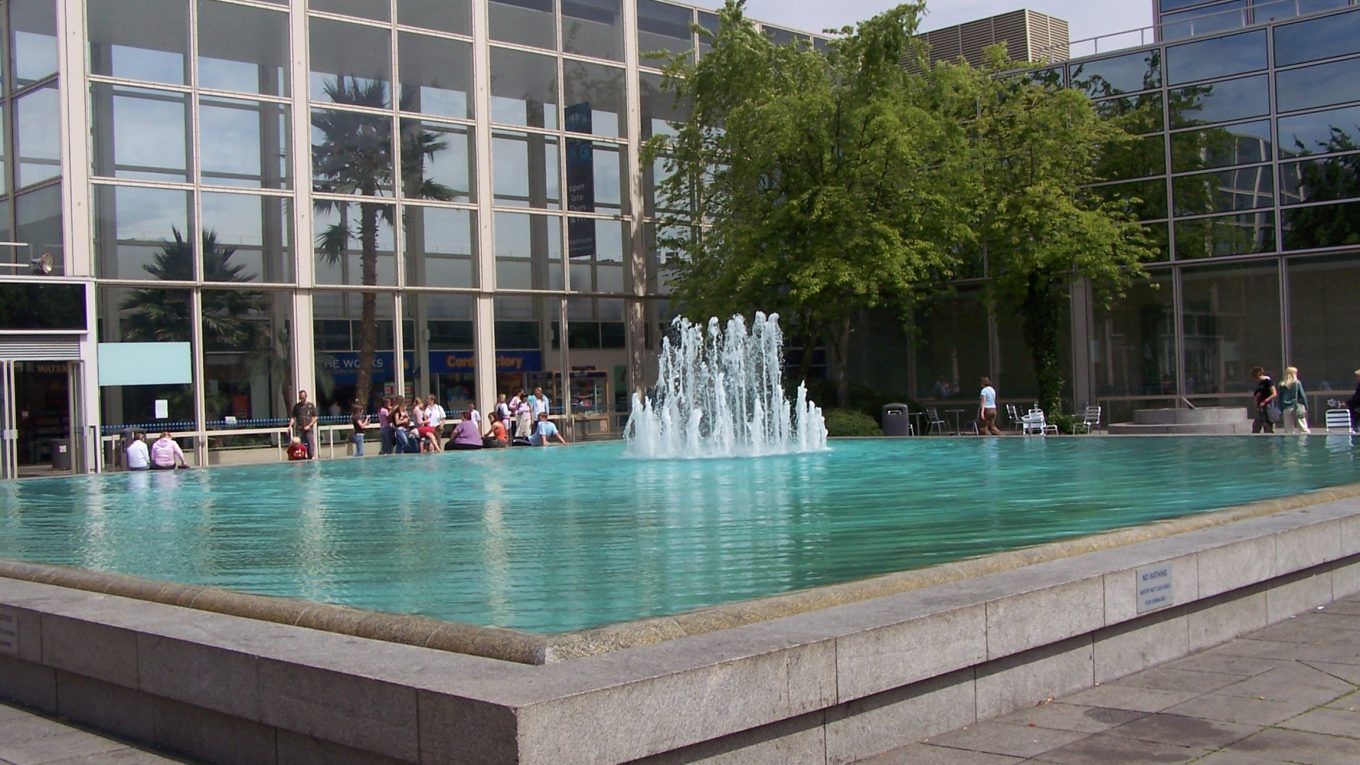Milton Keynes – A New Town
Milton Keynes is the largest town in Buckinghamshire, England, which is located north-west of London. The town was created with an Act of Parliament in 1967 which approved the building of a new community of 250,000 people covering Buckinghamshire farmland and villages. This was due to the government decision that new towns in the South East of England were needed t0 deal with the population increase and predicted overcrowding of London.
When the boundary of Milton Keynes was defined in 1967, some 40,000 people lived in three towns and fifteen villages or hamlets in the “designated area”. Although the development would impact the lives of the locals who already resided in the area, the intended goal of Milton Keynes was instead to encourage outsiders, mainly Londoners, to move there.
This clip is from an advert from the 1980s that was commissioned to encourage Londoners to move to Milton Keynes.
The Planning of Milton Keynes
The Milton Keynes Development Corporation (MKDC) was established by the government to carry out its ambitious planning and construction of this new modern town. The video from the BFI below is an 8 minute video from 1973, which shows what the planning and development on Milton Keynes in its early stages. It includes an interview with the MKDC, who explains his vision for the future of the town.
The Development of Milton Keynes
This urban planning saw rapid growth in Milton Keynes. With most towns evolving gradually over hundreds of years, Milton Keynes went from being a small rural village to bustling town in just 50 years. The video below from British Pathe shows archival footage of Milton Keynes in 1967, before any development had started.
Collection of Maps which demonstrate the rapid growth of Milton Keynes between the 1950s and now
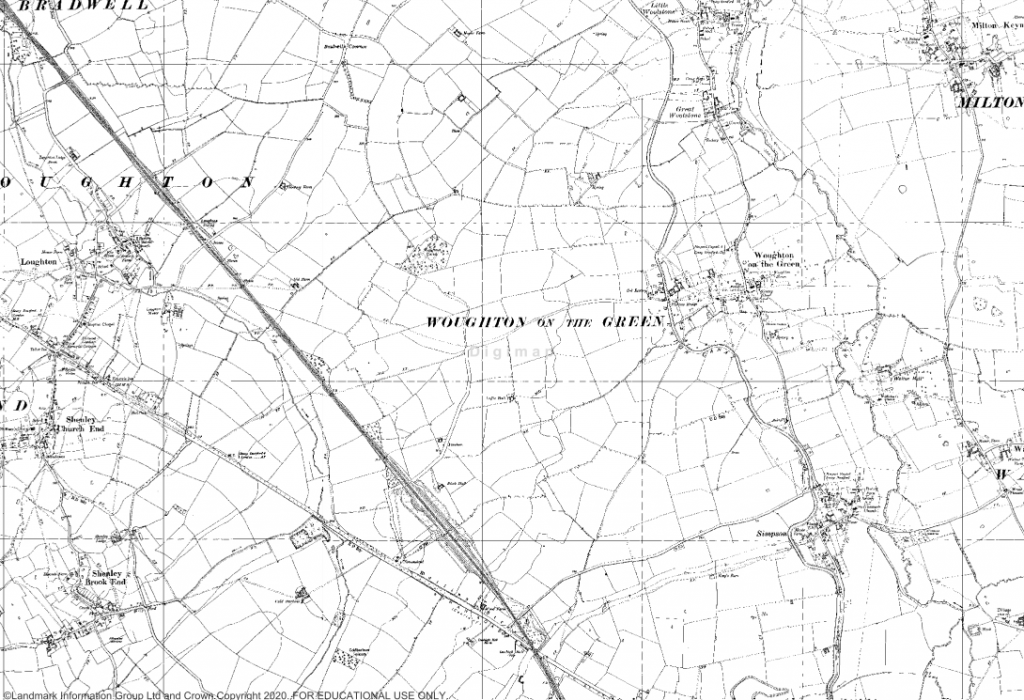
Milton Keynes in the 1950s 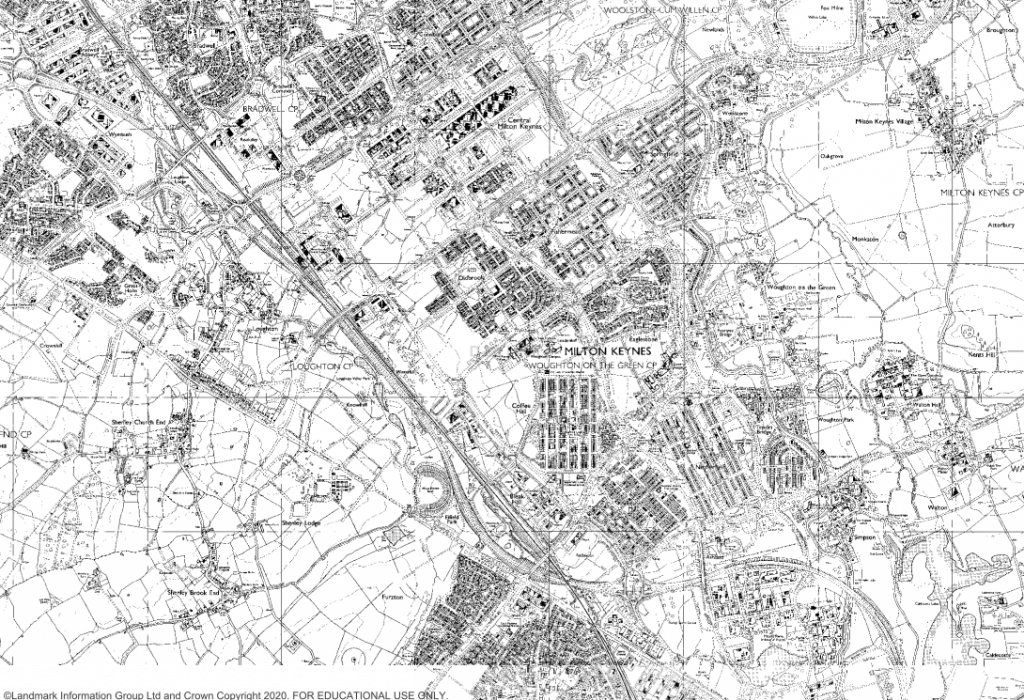
Milton Keynes in the 1980s 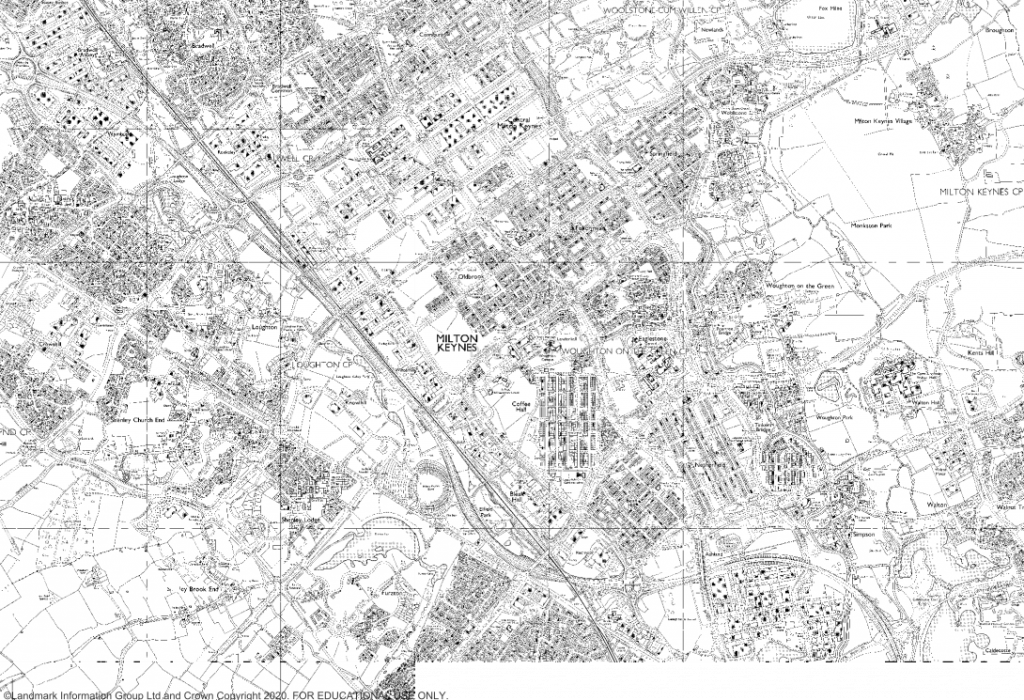
Milton Keynes in the 1990s
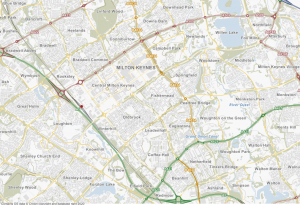
Milton Keynes Shopping Centre
An important feature of the development of Milton Keynes was the opening of the Shopping Centre in 1979. It was constructed to provide and economic and social centre for the town.
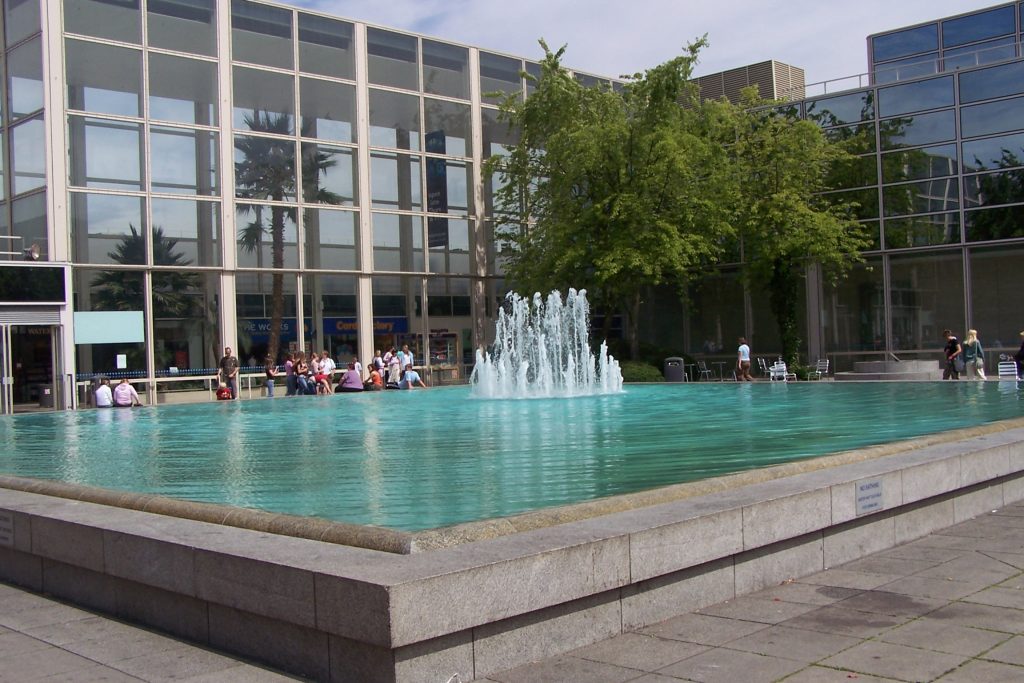
Source: Cnyborg
The shopping centre became a key signifier of Milton Keynes, recognised as an iconic building that attracted outside visitors.
In November 1979, a survey revealed that whilst over half the shopping centre’s visitors came from within Milton Keynes itself, the rest came from outside.
“…not only a great commercial success, but, equally important, has provided a unifying feature for the city which was lacking during the first stages of development … Its ideal location, and the quality and opportunities which Milton Keynes presents for initiative and growth, are clearly evident…”
The 1980 MKDC Annual Report
At the time of its opening, Milton Keynes shopping centre was the largest in the country. Previous British shopping facilities were largely characterised by the models of the arcade, the department store, and the high street. The new shopping centre in Milton Keynes provided a central area that was completely under cover, and its layout made it possible to reduce the chaos of the high street. The increase in size also allowed for an increase of choice of shops for consumers, which went hand-in-hand with the consumerism of Thatcher’s Britain in the 80s, resulting in Milton Keynes economy to flourish.
The video below shows footage of the shopping centre from 1980, demonstrating its features that appealed to many:
Below is a clip from an oral interview with local resident from Bedfordshire, who lives in a town not far from Milton Keynes. In the clip she discusses her own experience of shopping at Milton Keynes Shopping Centre, and how the opening of the shopping centre changed her own personal shopping habits.
Overall, the opening of the shopping centre in 1979 was an important feature of the development of Milton Keynes:
- It created a central hub for the town
- It generated jobs in the retail and service industry
- It encouraged outsiders to visit the new town
- It encouraged personal consumerism which in turn boosted the local economy
Other key milestones in Milton Keynes development:
- 1969 – The Open University moves it’s headquarters to Milton Keynes
- 1982 – Milton Keynes railway station opens
- 1984 – Milton Keynes General Hospital opens
- 1985 – Britain’s first multiplex cinema, The Point, opens
- 1999 – Milton Keynes Theatre & Art Gallery opens
- 2000 – Xscape opens, containing an indoor ski slope, leisure facilities and related shops
- 2007 – Stadium:mk opens and Milton Keynes Dons move in.
- 2008 – University Centre Milton Keynes opens
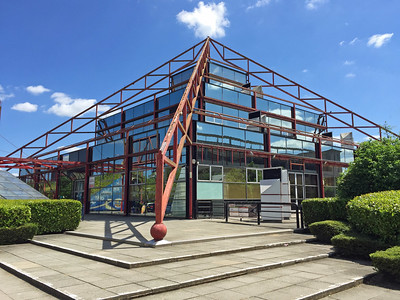
Photo: Diamond Geezer
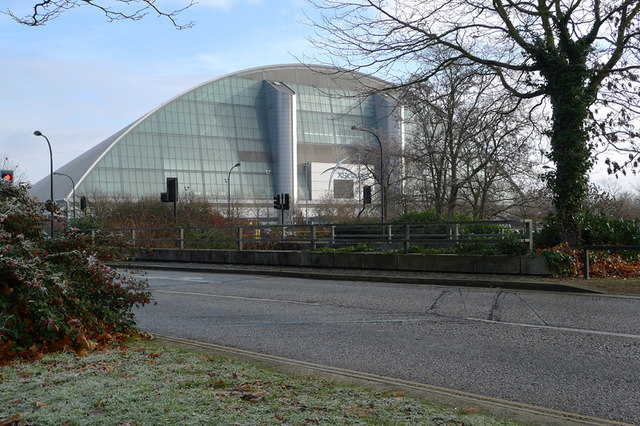
Photo: Camerman
Statistics
- Total Population: population grew from 17,982 in 1801 to 248,821 in 2011.
- Milton Keynes has one of the more successful economies in the UK. It has the UK’s fifth highest number of business startups per capita.
- Milton Keynes is home to several major national and international companies.
- Employment: the main areas of employment is about 90% service industries and 9% manufacturing.
Milton Keynes now
In recent years, Milton Keynes seems to have garnered a reputation for being ‘soulless’, with it lacking many features of a classic ‘British town’.
Lauren Pikó explores this reputation of Milton Keynes further in her book: ‘Milton Keynes in British Culture: Imagining England’. Pikó moved to Milton Keynes in 2009 due to its appeal of low rental prices and its proximity to London. She explains how being from the suburbs, she never felt that Milton Keynes was unusual in its style or layout, however found that most people’s reactions after asking where she lived were negative. Pikó concludes that it is Milton Keynes’ newness that makes it seem problematic. However, she also poses the question: why is Milton Keynes regarded as being worse than Watford, Harlow, or any other ‘new towns’?
For further information below is a link to a BBC4 documentary titled ‘Milton Keynes and Me’, which looks at what Milton Keynes was intended to become, and the reality of what it has developed into.
https://learningonscreen.ac.uk/ondemand/index.php/prog/0F7FD6A6?bcast=130406378
Sources Used and Further Reading
Cawley, Laurence. “Milton Keynes: The Middle-Aged New Town.” BBC News. BBC, January 23, 2017. https://www.bbc.co.uk/news/uk-england-beds-bucks-herts-38594140.
Cinemagazine, “Milton Keynes – A Village City” [colour government film], 1973, BFI Player, accessed 10 January 2021, https://player.bfi.org.uk/free/film/watch-milton-keynes-a-village-city-1973-online
Hanson, Stuart. “A ‘Glittering Landmark for a 21st Century Entertainment Centre’: The history of The Point multiplex cinema in Milton Keynes.” Historical Journal of Film, Radio and Television 33, no. 2 (2013): 270-88
“Milton Keynes Shopping Centre 1980” [colour archival footage], c.1980, YouTube, accessed 10 January 2021, https://www.youtube.com/watch?v=tXm5MogHFBY
“Milton Keynes: Wish I Lived Here advert” [colour television advert], c.1980, YouTube, accessed 12 January 2021, https://www.youtube.com/watch?v=C4tBJL–z_8
“New Town Part Of Issue – World In View” [black and white newsreel footage], 1967, British Pathé, accessed 10 January 2021, https://www.britishpathe.com/video/new-town-part-of-issue-world-in-view/query/Milton+Keynes
Ortolano, Guy. “PLANNING THE URBAN FUTURE IN 1960s BRITAIN.” The Historical Journal 54, no. 2 (2011): 477-507.
Pikó, Lauren. Milton Keynes in British Culture: Imagining England. Oxford: Routledge, 2019.
Pikó, Lauren. “You’ve never seen anything like it”: multiplexes, shopping malls and sensory overwhelm in Milton Keynes, 1979–1986.” The Senses and Society 12, no. 2 (2017): 147-61
Thomas, Ray. “Milton Keynes City of the Future?” Built Environment (1978-) 9, no. 3/4 (1983): 245-54.

